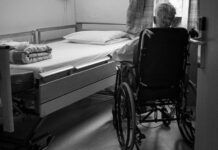Eli Lilly and Company announced that a pivotal Phase III study of Cialis® (tadalafil) tablets 5 mg for once daily use met its co-primary endpoints, significantly improving measures of both erectile dysfunction (ED) and signs and symptoms of benign prostatic hyperplasia (BPH) in men with both conditions. The study is available online in The Journal of Sexual Medicine. It is one of three efficacy and safety studies included in the supplemental new drug application Lilly submitted to the U.S. Food and Drug Administration (FDA) last year seeking approval for Cialis in the treatment of the signs and symptoms of BPH and the treatment of both ED and the signs and symptoms of BPH (ED+BPH).
The FDA approved Cialis on Thursday for both new indications.
It is important to note that Cialis is not to be taken with medicines called “nitrates” (often prescribed for chest pain); or with recreational drugs called “poppers” like amyl or butyl nitrite, as the combination may cause an unsafe drop in blood pressure; or if allergic to Cialis or Adcirca® (tadalafil), or any of its ingredients. Anyone who experiences any symptoms of an allergic reaction, such as rash or hives, should call a healthcare provider or get help right away.
Anthony Beardsworth, M.D., senior medical director for Eli Lilly and Company said, We are pleased with the outcomes of this study. Lilly is committed to research that can help us offer new treatment options and advance our understanding of ED and BPH, conditions that affect millions of men worldwide.
About the Study
The study assessed the effects of Cialis 2.5 mg or 5 mg for once daily use on ED and the symptoms of BPH in men with both conditions. It is the first Lilly-sponsored study that evaluated the effect of Cialis exclusively in male patients with both ED and BPH symptoms.
The Phase III randomized, double-blind, placebo-controlled, parallel-design clinical study, conducted in 54 urology centers in nine countries, assessed the safety and efficacy of Cialis 2.5 or 5 mg for once daily use in 606 sexually active men aged 45 years and older who had experienced ED for at least 3 months and BPH symptoms for more than 6 months. The men were randomly assigned to receive placebo, Cialis 2.5 mg, or Cialis 5 mg in a 1:1:1 ratio for a period of 12 weeks.
The co-primary measures were the changes from baseline to week 12 of the International Index of Erectile Function-Erectile Function Domain (IIEF EF), a questionnaire evaluating sexual function where higher scores indicate better erectile function, and the International Prostate Symptom Score (IPSS), a questionnaire evaluating lower urinary tract symptoms occurring during the preceding month where lower scores indicate less severe symptoms. Key secondary measures were the change during treatment in the percentage of “yes” responses to question three of the Sexual Encounter Profile (SEP Q3) and BPH Impact Index (BII). The SEP Q3 asks “Did your erection last long enough for you to have successful intercourse?” The BII is a questionnaire evaluating the impact of urinary problems on overall health and activity, with lower scores indicating less impact.
Cialis 5 mg for once daily use significantly improved the mean differences from baseline on IIEF-EF Domain scores and IPSS scores through 12 weeks versus placebo (4.7 and -2.3, respectively, both P<0.001). For the 2.5 mg once daily dose, significant improvements were seen versus placebo on IIEF EF Domain scores at 12 weeks (3.4, P<0.001), but the difference from placebo in IPSS scores was not significant after 12 weeks (-0.8, P=0.18).
On the key secondary measures, the mean differences from baseline with Cialis 5 mg compared to placebo after 12 weeks were 19.7% (P<0.001) on the SEP Q3 and -0.9 (P<0.001) on the BII. Cialis 2.5 mg for once daily use significantly improved the SEP Q3 (mean difference from baseline compared to placebo 12.5 %, P<0.001), but the reduction in the BII was not significant (-0.4 versus placebo, P=0.16).
The overall incidences of treatment-emergent adverse events (TEAEs) were: 19.5 % in patients treated with placebo, 25.3% in patients treated with Cialis 2.5 mg, and 27.4% in patients treated with Cialis 5 mg. The most common TEAEs in the Cialis 5 mg group were headache (5.8% versus 3% in placebo group), back pain (2.9% versus 1.5% in placebo group), and nasopharyngitis (2.4% versus 2.0% in placebo group). There were no reports of ejaculatory dysfunction or urinary retention in any treatment group.
“It is encouraging that Cialis at 5 mg showed the potential to treat both ED and BPH symptoms,” said lead author Blair Egerdie, M.D., Urologic Medical Research in Kitchener, Canada. “Given that the prevalence of coexisting ED and BPH is high, especially in older men, I believe that a single medical therapy approved to treat both conditions is a valuable therapeutic option.”



















